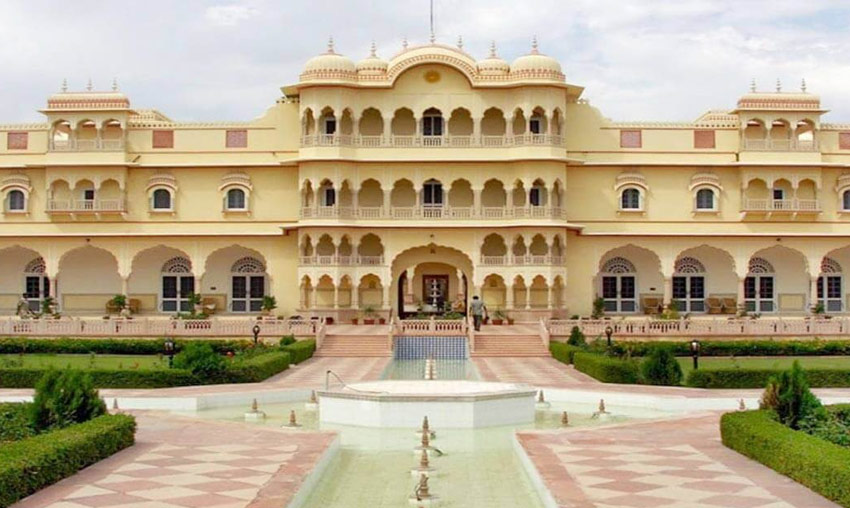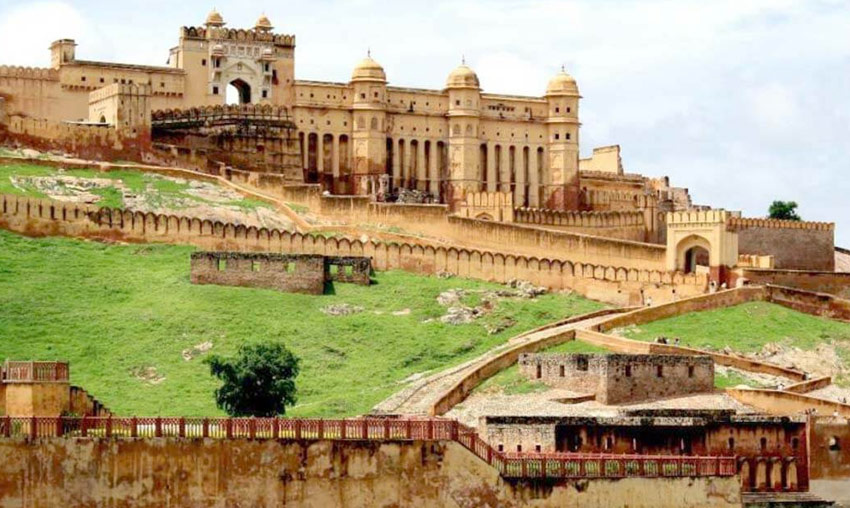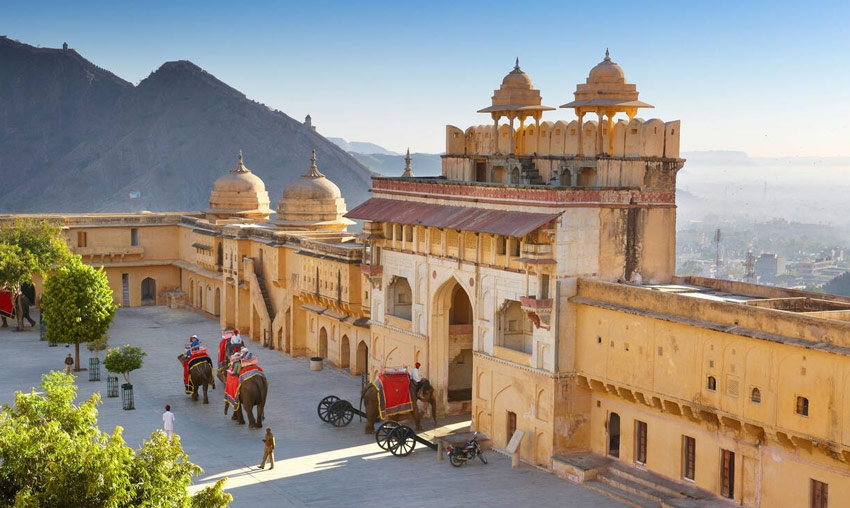Nahargarh Fort Jaipur, India (Entry Fee, Timings, History, Built By, Images & Location)
Located on the outskirts of Jaipur, Nahargarh Fort is well-known for both its long wall connecting it to Jaigarh Fort and its stunning views of the city. The Nahargarh Fort, which is impregnable and adorned with intricate stonework and carvings, was formerly the stronghold of Jaipur city, together with its two nearby forts, Amer and Jaigarh. In 1734, Maharaja Sawai Jai Singh II constructed the Fort as a getaway. If you’re close to Nahargarh Fort, you should definitely check out the Padao Restaurant, where you can take in sweeping views of Jaipur.
Nahargarh Fort was largely used as a retreat for the ladies of the royal household and features a ladies quarters by the name of ‘Zenana’. Also known as the Madhavendra Bhavan, the ‘Zenana’ was built by Maharaja Sawai Jai Singh II. The ‘Mardana Mahal’, its counterpart, was also built for the royal men in the complex. The Nahargarh Biological Park, a sanctuary for magnificent creatures including tigers, leopards, and Asiatic lions, is another point of interest in the Nahargarh Fort.
History of Nahargarh Fort
Nahargarh Fort was constructed in 1734 by Maharaja Sawai Jai Singh, the founder of Jaipur city, and is known for a number of significant historical occurrences. Throughout its lengthy and distinguished history, this fort—which served as a summer vacation palace—was never assaulted. Nonetheless, it was the location of significant historical occurrences, including the 18th-century treaty signings with Maratha armies. The Rathore prince Nahar Singh Bhomia, whose ghost was placated by a temple inside the fort dedicated to him, is also noted to have impeded the fort’s construction. It is also known that during the Sepoy Mutiny in 1857, a number of Europeans sought refuge at the fort.
When RajaSawai Ram Singh constructed a series of palaces inside the Nahargarh Fort in 1868, the palace received significant repairs. ‘Rang De Basanti’ and ‘Shuddh Desi Romance’ are only two of the well-known films that have starred Nahargarh.
Architecture of Nahargarh Fort Jaipur
The fort’s interior is filled with a number of exquisite Indo-European buildings. A temple devoted to the Jaipur emperors may be found to the left as you enter the fort through the “Tadigate” entrance gate. The complex also has Nahar Singh Bhomia, another temple dedicated to the Rathore prince. Sawai Madho Singh constructed a “Madhavendra Bhawan” in addition to that. The two-story edifice houses the king’s and his twelve queens’ suites. Each of the nine comparable units has a kitchen, store, restrooms, bedrooms, and a lobby. Diwan-I-Aam, an outside enclosure where the king met his subjects and heard their grievances and worries, is another attraction within the palace.
Nahargarh Biological Park
This biological park, which is part of the Nahargarh Fort complex, is yet another popular destination. The organic park, which spans 7.2 square kilometres of the Nahargarh Sanctuary, is embellished with exquisite quartzite and granite stones. The area is also known for its abundant vegetation, which primarily consists of humid spike jungles and hot, dehydrated deciduous forests. Here, a variety of species, such as the Bengal tiger, Indian leopard, and Asiatic lion, can be observed in their native habitat.
The plants that make up the flora are typical of the Kathiawar-Gir dry deciduous woods, which is the ecoregion. It’s interesting to note that there are up to 285 different species of birds here, making it a haven for bird watchers. Expect to see birds such as the white-naped tit, which can only be found here, and if you wish to have a rendezvous with other species as well, don’t forget to visit the Ram Sagar.
The Nahargarh Zoological Park, which is home to creatures like Asiatic lions, Bengal tigers, panthers, hyenas, wolves, deer, crocodiles, sloth bears, Himalayan black bears, wild boars, and more, is another worthwhile place to visit. Details about the zoo include:
Open Time: 15th March – 14th October between 8.30 AM to 5.30 PM, 15th October – 14th March between 9.00 AM to 5.00 PM. (Closed on Tuesdays)
Ticket Cost: Indian visitors: INR 50per person, Foreigner: INR 300 per person, Student: INR 20 per student
Vehicle Costs: Car/jeep: INR 300 per vehicle, Motor cycle: INR 30 per vehicle, Auto rickshaw: INR 60 per vehicle, Bus: INR 500 per vehicle
Camera Costs: Camera (Indian): INR 200, Camera (Foreigner): INR 400, Video Camera (Indian): INR 500, Video Camera (Foreigner): INR 1000
Sculpture Park at Nahargarh Palace
Maharaja Sawai Madho Singh II constructed the lavish Madhavendra Palace at Nahargarh Fort as his personal sanctuary. Sculpture Park was created two centuries later when curator Peter Nagy decorated it with beautiful sculptures that evoke the decadent past. Since its public opening on December 10, 2017, this collaborative effort between the Government of Rajasthan and the non-profit organisation Saat Saath Arts has served as a venue for modern artists to exhibit their work. It has 53 pieces of art by 24 renowned artists, both Indian and foreign.
The royal courtyard, which gleams with an exuberant brilliance, is where the larger, more spectacular statues are located. The royal castle evokes awe and wonder despite being symmetrical from the inside and challenging to navigate. Even though the sculptures within the palace are smaller, they are nevertheless incredibly impressive. Since the Sculpture Park is an annual show, a new story will be told when the artworks are replaced in November 2018.
Timings: 10:00 AM – 5:30 PM
Entry Fees: Indian: INR 50, Foreign National: INR 200
Tips For Visiting Nahargarh Fort
1. Don’t forget to bring a bottle of water.
2. Since you will be walking on your feet inside the fort, it is advised that you wear comfortable shoes.
3. Bring packaged food with you, but be careful not to leave any trash behind.
4. If you want to learn about the fort’s personal history, take a guide.
5. For a supplementary entrance cost of INR 50 per person, you can also eat at the fort’s outdoor PADAO restaurant.
How To Reach Nahargarh Fort
Good intra-city transport connects Jaipur to the rest of the city. It is simple to take a bus, autorickshaw, or taxi from anywhere in the city to the Nahargarh Fort. Because Nahargarh Fort is a well-liked site, all of these forms of transportation are readily available.


